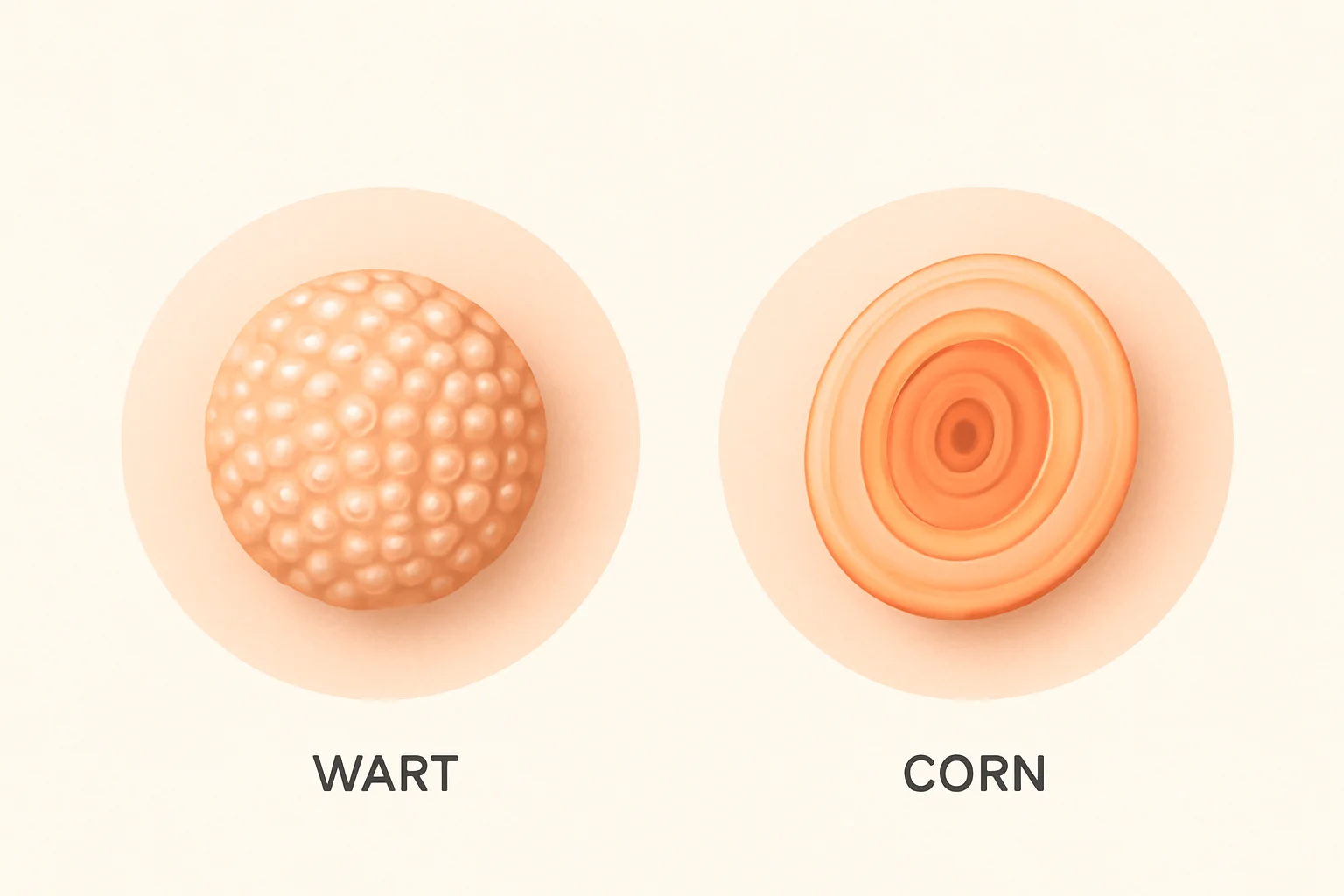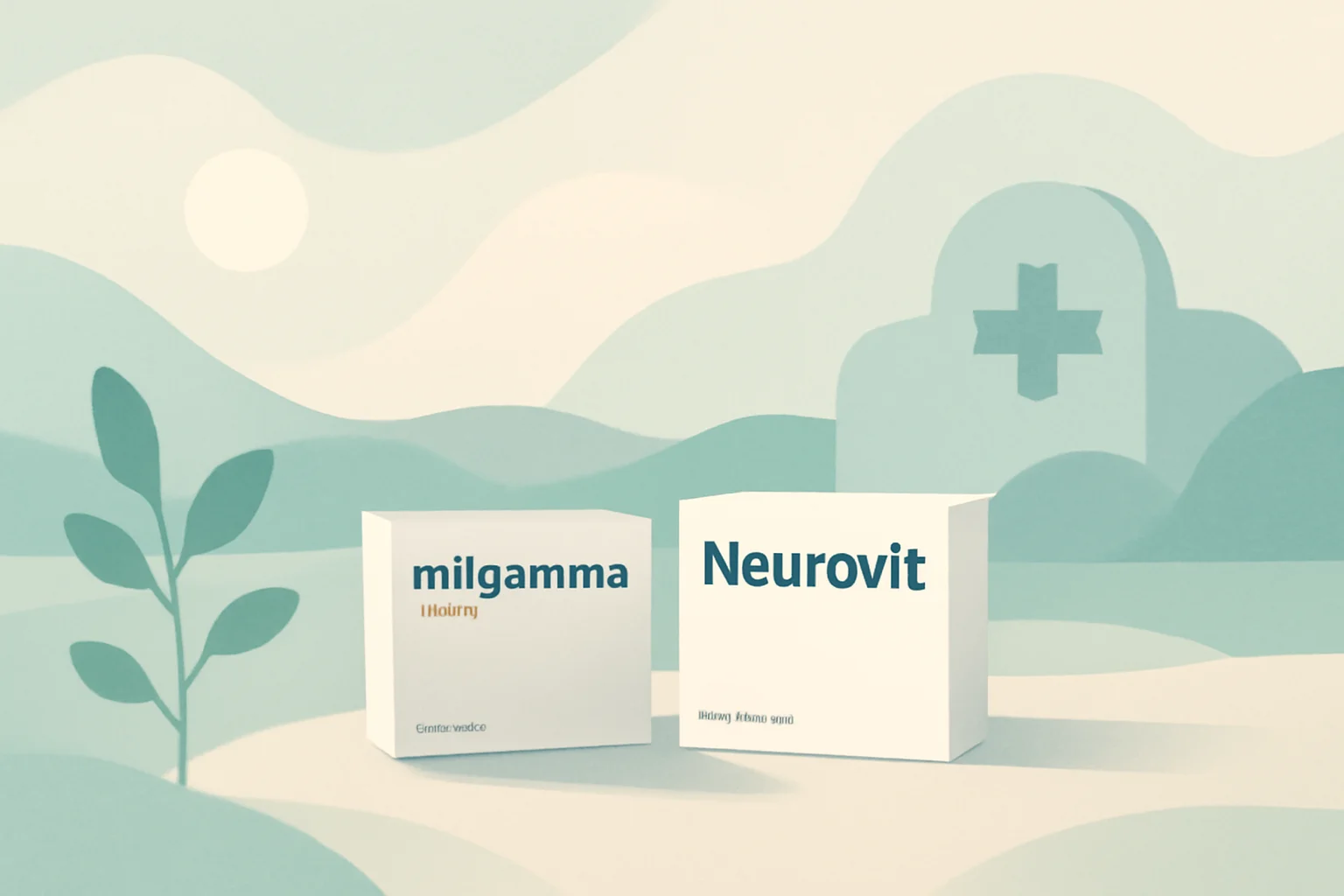
Wart or Corn: How to Distinguish Between Them?
A warts and calluses are common skin problems that affect many people, regardless of their age or lifestyle. These skin lesions often disrupt daily life, and many seek effective solutions for their treatment. Although the two lesions share many similarities, there are also significant differences between them. Warts are of viral origin, while calluses primarily develop as a result of mechanical pressure. To avoid misdiagnosis, it is important to be aware of the differences and the appropriate treatment options.
Our skin is our largest organ and is constantly exposed to various external influences. These influences can often lead to skin problems, among which warts and calluses are the most common. To maintain skin health, it is essential to pay attention to the condition of our skin and recognize any potential lesions. With the right information, we can better understand what steps we can take for prevention and treatment. Below, we will present in more detail the characteristics, causes, and treatment options for warts and calluses.
Warts: Symptoms and Causes
Warts are small, rough growths that appear on the surface of the skin and can come in various shapes and sizes. They typically develop as a result of an infection with the human papillomavirus (HPV), which causes abnormal growth of skin cells. Warts most commonly occur on the hands, soles of the feet, and face, but they can appear anywhere on our body.
The appearance of warts is often painless, but they can sometimes itch or irritate the skin. The most common types include common warts (verruca vulgaris), plantar warts (verruca plantaris), and flat warts (verruca plana). Common warts usually have a rough surface, while flat warts are smoother and smaller.
The causes of warts include viral infection, skin injury, and a weakened immune system. They can spread through direct contact between people, making communal showers, swimming pools, and changing rooms particularly favorable locations for catching warts. Wearing tight shoes and foot sweating can also contribute to the development of plantar warts.
Warts can be treated in various ways. Home remedies, such as using garlic or vinegar, are appealing to many, but their effectiveness can vary. Treatments recommended by dermatologists include freezing (cryotherapy), laser treatment, and chemical peels. It is important not to attempt to remove warts on your own, as this can worsen the situation.
Calluses: Symptoms and Causes
Calluses, also known as keratosis, are hard, rough areas that develop on the surface of the skin, primarily on the feet and between the toes. These thickened areas of skin form as a protective response when the skin surface experiences constant irritation or pressure. Calluses can be painful, especially when they rub against shoes.
The most common causes of calluses include wearing uncomfortable shoes, foot deformities (such as hammertoes), and being overweight. People who stand for long periods or those who regularly engage in sports are also more prone to developing calluses. The skin’s natural reaction to pressure and friction is thickening, which leads to the formation of calluses.
Treating calluses is generally simpler than treating warts. Wearing appropriate footwear, maintaining foot hygiene, and regular pedicures can help prevent the formation of calluses. If calluses have already developed, treatments recommended by dermatologists include callus removal, softening the skin, and wearing proper footwear. Home treatments include soaking in water and exfoliating, but their effectiveness can vary.
It is important not to ignore the appearance of calluses, as they can become painful over time and may even lead to inflammation. If calluses become painful or do not respond to home treatments, it is advisable to consult a doctor.
Differences Between Warts and Calluses
Although warts and calluses are often confused, there are several fundamental differences between the two lesions. The primary distinction is that warts are of viral origin, while calluses are the result of mechanical irritation of the skin. Warts typically appear on the surface of the skin and can often appear in multiple numbers, while calluses develop in areas subjected to pressure and are usually hard, round lesions.
The color of warts can vary from skin tone to dark brown shades, while calluses are generally lighter and similar in color to the skin. The surface of warts is rough and uneven, while calluses have a smoother but hard texture.
There are also significant differences in treatment. Removing warts often requires medical intervention, while treating calluses can often be managed with home methods. For warts, due to their viral origin, proper diagnosis is crucial, whereas for calluses, prevention and wearing appropriate footwear are key.
Overall, warts and calluses are two different skin problems that develop for different reasons and require different treatment approaches. Medical diagnosis and appropriate treatment are essential for finding effective solutions.
This article does not constitute medical advice. Always consult a doctor for health problems!

